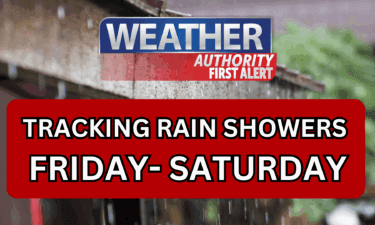Desert Difference Conference Showcases Ag Tech for Yuma Farmers
The Desert Difference ag technology conference began November 13 in Yuma, bringing regional growers and industry representatives together for equipment demonstrations and presentations designed for desert conditions. The two day event aims to help local producers evaluate technologies such as precision irrigation, harvest automation, and remote monitoring, with potential implications for water use, labor costs, and farm profitability.
Listen to Article
Click play to generate audio

The Desert Difference conference opened in Yuma on November 13, presenting a concentrated showcase of agricultural equipment and technology tailored to desert production. Organizers positioned the event as a proving ground for machinery and systems that must withstand Yuma's intense sunlight and unique growing conditions. Exhibitors set up booths and ran hands on demonstrations over November 13 and 14, offering growers a chance to compare tools in the field and in real time.
Attendance drew regional growers and industry representatives who demonstrated precision irrigation systems, harvest automation equipment, and remote monitoring platforms, among other tools. For local producers, the event offered more than product brochures. Seeing equipment operate under Yuma conditions allows growers to judge durability, compatibility with local cropping systems, and likely maintenance needs. That practical evaluation matters in a county where outdoor exposure, temperature swings, and water management shape investment decisions.
From an economic perspective, the technologies on display speak directly to two persistent pressures on Yuma agriculture. Labor availability and cost remain central concerns for harvest intensive crops, and automation promises to reduce reliance on seasonal crews. Precision irrigation and remote sensors address water efficiency, an issue that affects input costs and regulatory compliance. While these technologies can improve yield consistency and reduce resource use, adoption requires capital outlay and operational change, creating short term budgetary tradeoffs for many farms.
Market implications extend beyond individual operations. If local adoption accelerates, vendors and service providers could see expanded demand for installation, training, and maintenance services in the region. Supply chain relationships may shift as farms invest in digital platforms that collect data and rely on vendor support. For buyers, comparing multiple vendors at a local conference can lower search costs and shorten the time from evaluation to purchase.
Policy choices will influence the pace of adoption. Public programs that offset upfront costs, fund demonstration trials, or support workforce training could make a difference for smaller producers. Extension services and cooperative partnerships can help translate pilot demonstrations into workable farm practices. Without targeted support, some growers may delay investments despite potential long term savings in labor and water expenses.
The Desert Difference conference aimed to bridge those gaps by connecting producers directly with vendors and offering in situ demonstrations. For Yuma County farmers weighing investments in durability and efficiency, the event provided data points and practical experience that could inform decisions in the coming season. As climatic pressures and labor market dynamics continue, local adoption of these technologies will help shape the economic outlook for the region's farms.


